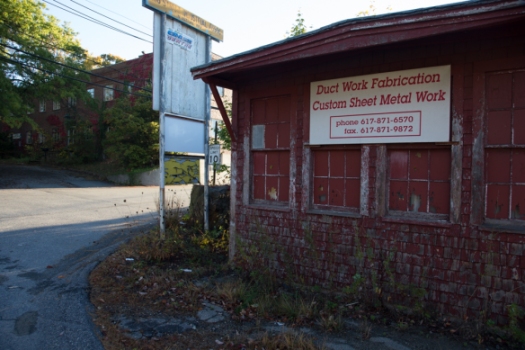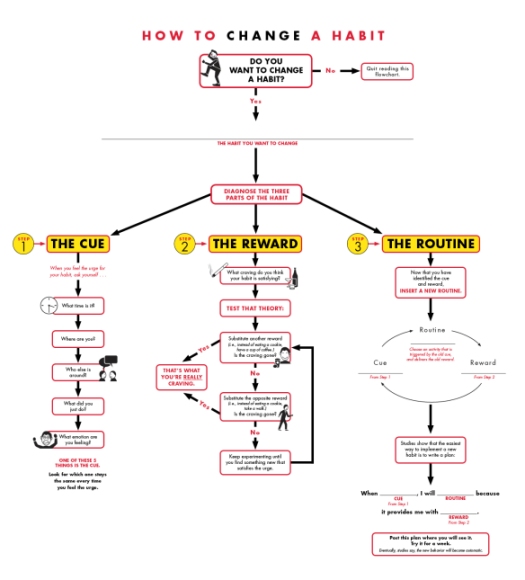I spent a good amount of time wandering around in the woods this weekend. Surprisingly many of the trees here in Massachusetts still have leaves that have yet to change color.
Artist's Communities vs Mastermind Groups
I continue to ruminate on the idea of artist’s communities and in particular what does it take to build and sustain an effective group. I was surprised to find relatviely little written on this topic until I asked, and answered for myself, the following questions:
- What do you get out of it?
- What do you contribute to the group?
- What is the optimal size of such a group?
How would you answer these questions?
For me this kind of group would provide both support and accountability. It would provide me with access to experience that I currently don’t have, to feedback about current directions that I’m heading in and provide me with the impetus to keep going.
In addition to being generally supportive of others in the group I would imagine that in such a group everyone has overlapping skills but expertise in specific areas. Each member could as requested teach and share their unique expertise with the rest of the group to help all move forward.
I always feel as though if you are at dinner with a group of more than 6 you really only interact with your nearest neighbors anyway, ~ 5 others, so this is the right number for a dinner party for me and it feels about the right size to me for one of these artists groups. Small enough to be able to really know the other people in the group.
After unpacking this for myself I realized that what I was describing was what is now commonly referred to as a ‘mastermind group’, something that most people trace back to Napoleon Hill’s book ‘Think and Grow Rich’. I read this book 15 years ago and had a quick skim through it again when I was writing this. The language is archaic, making it hard work to get through.
Hill was of course focused on how you can accumulate money and the mastermind group was a tool that would let you develop and vet your plans with a team of people that complemented your skills. Not quite what I had in mind. I was thinking more along the lines of ‘to help you develop mastery and achieve your goals‘.
Future Shots – Cataloging Locations
Most people that I know, and who know me, always seem to be a little nervous when they’re in the car with me. I consider myself to me a ‘generally safe’ driver, other than a few minor hiccups there’s nothing to see here keep moving along. What I think people realize quickly is that while I’m watching the road I’m also watching everything else that’s going on around the periphery. I’m looking for photos. I do this so much in fact that I had stopped realizing that I was doing it until I almost ran off the road last week.
For the image above I originally saw from the car what you see below.
This mental cataloging process works well for me when I’m driving around locally when I have a chance to come back when the lights better or the weather’s different but doesn’t work so well when I most likely won’t have the chance to return or it may be a year or more until I’m able to stop by again. In those cases I’m trying harder to stop and take the shot even if it only serves as a sketch or record of a location that I should return to.
None of my cameras have built in GPS, although I know that is a feature in some, but my phone certainly does and so I’ll be making more sketches and record shots with my phone just so that I know where I want to come back.
What about you? Do you have a system for cataloging places that you want to take photographs? I’d love to hear about it if you do. How would you manage locations that you’ve got GPS tags for in photos?
The Power of Community
In more than a couple of portfolio reviews the folks that I was sat down with have asked me about my community. Who are the people around you that are able to share in the trials and tribulations of creating work? The people that can support you when you venture beyond what is safe and encourage you to go further.
What does your community look like?
Hopefully it will be diverse. You will have the never ending cheerleaders who will support and encourage you regardless of what you’re doing. You’ll have the people who will pick you up when you’re down. The ones that know just what to say to penetrate the negative self-talk that many of us can slip into all too easily when we’re way outside of what we think we know is good. Finally you’ll have the people who will give you straight forward and direct feedback. Having a good balance of these groups in your life really helps.
As an aside are you like me and hear the whisper of the critic more clearly than the shout of the supporters? I’m not sure why that is but it does seem to be a pattern repeated time and time again.
Having regular interactions with your community so that you all benefit is what makes communities work. Mostly you need to show up and participate.
I’m also finding that if you are to grow from those interactions you need to ask good questions. Perhaps this is an obvious to you, but it hasn’t always been to me. As I’ve grown more sophisticated as a photographer I wish that the questions that I’ve asked have also grown in sophistication but they haven’t. All too often I look for approval – is this good? do you like it? Does that sound familiar?
Better questions lead to better answers which in turn allow you to move forward. The simple question ‘Do you like it’? almost demands a simple yes or no answer. A more involved question such as ‘what do you think of when you see this image’ or ‘what could make this stronger’ requires more of the viewer and may well result in more informative feedback. The associations that people may surprise you and suggest ways in which you can extend the work.
I’d be delighted to hear your thoughts on community – how to build community, how to sustain it for the long term and anything else you want to add to the conversation – add them in the comments section.
New York, New York!
Resources for Time Management
I’ve been experimenting with some new tools for time management that I think are interesting and well worth sharing. I think that I’ve mentioned before that I use a hybrid of David Allen’s ‘Getting Things Done‘ system, J.D. Meier’s ‘Getting Results the Agile Way‘ and the tools Peter Bregman describes in ‘18 Minutes‘.
What do I use from what? I use GTD as the overall scaffolding for my approach this includes both the action lists, next step thinking as well as the horizons of focus. Peter Bregman’s book and J.D. Meier’s overlap somewhat. Both ask that you consider – what is this year about? and what is this day about? – in an effort to make sure that you have your attention on the things that matter the most. Working between these three books you should have a good sense of the big picture – Work, Relationships, Family and Self Development – and how what you’re going to do in the coming year supports each of these.
There are some useful templates from Peter Bregman here and from JD Meier here. Check out this link for a guided 30 day introduction to JD Meier’s methodology.
I live and die by my calendar and have been experimenting with a new calendar app on the iPhone and iPad called ‘Tempo’. Definitely a step up from the calendar app that comes preinstalled.
List managers are a bit trickier. I’ve tried lots including lists in evernote which works quite well – I do like the fact that evernote syncs everywhere but I seem to be settling on ‘Things’ which is about as complicated as I want my list manager to be. Another one worth exploring is ‘2Do’.
I’d be interested in hearing what approach you follow for increasing your productivity and what are your favorite apps productivity/time management apps. Add your voice to the comments below.
An Easy Way to Add a Second Display
I am continue to tinker with my post-processing workflow, not that there’s anything intrinsically wrong with what I’m currently doing, just that I feel it could be better.
In looking what graphic designers and others who edit images for a living gravitate towards many seem to be using two displays and a tablet based editing system such as the Wacom Cintiq.
I’ve experimented with Wacom tablets in the past but they always seem to be more trouble thatn they’re worth. Perhaps if I made myself use the tablet for everything for a week it would start to seem as natural as reaching for the mouse does.
Wondering whether I would struggle to fully embrace a second monitor I was intrigued when I came across the air display app that allows you to use the iPad as a second display.
Having a second monitor means of course the ability to move the pallets section in photoshop to a second monitor, or to have a full screen image on one display and a zoomed in image that you’re working on on the other, or perhaps to use the iPad and an appropriate stylus as a budget Cintiq.
Seems like there are lots of reasons to try this option out and the cost of the app is much lower than that of an additional monitor. Have you tried using the iPad as a second display? I’d be delighted to hear your experiences if you have.
Friday Inspiration: Jamie Wyeth
One of the things that I often wonder about is ‘what does it take for the children of ‘successful’ parents to be successful in their own right?’ All too often the children of successful parents fail to step out of the shadows. Sometimes that’s by intent but I suspect more often that not it’s just that it doesn’t happen for those kids.
That clearly doesn’t seem to have been an issue for Jamie Wyeth, a third generation artist whose grandfather Newell Convers “N.C.” Wyeth and his father was Andrew Wyeth. Jamie seems to have had a somewhat unusual childhood having left school at 11 to be home schooled and to train as an artist under the guidance of his aunt Carolyn. I get the sense that while he may have had shown some talent as an artist early on that he’s really worked hard and received very open feedback on his work from one of the great american realist painters – his father. In the video below that shows him at work on ‘The Inferno’ (I couldn’t believe that was watercolors on cardboard) you hear Wyeth talk about painting being ‘drudgery’ at times but you keep working for those moments when it all comes together, a point that I have now heard many artists reiterate in their own way. The muses favor those that they find working!
Wyeth has a major retrospective exhibition going on at the MFA in Boston now until the end of the year. It looks like it would be fun to see since it pulls together all of the various aspects of Wyeth’s work in a way that hasn’t been done in a number of years. Check out the exhibition site here and hear Jamie Wyeth talking about his work below.
How Building Daily Routines Can Help You Create More
“Inspiration Is for Amateurs—The Rest of Us Just Show Up and Get to Work”
Chuck Close
I’ve been thinking a lot recently about how small changes in habits can have a profound impact in what we are able to achieve across all aspects of our lives.
Mason Currey‘s book ‘Daily Rituals‘ is an interesting collection of observations of the daily routines of many of the great creators and provides an interesting insight into the lives of people who need to develop a body of work. What is apparent across almost all of these examples is commitment to showing up and getting to work. Not too much lolling around waiting for the muse to visit, just simply a matter of putting in the time whether they feel like it or not.
This attitude of ‘show up and do the work’ makes me realize that doing something every day, regardless of how small it is will could eventually yield substantial results. The simple act of writing 500 words everyday will mean that you will have written over 25,000 words for the year. Not too shabby.
A photo a day projects were very popular a year or two ago and seem to be unsustainable to me but doable for a month or one photo shoot a week for a year would both result in a body of work that you could do something useful with.
Changes in other parts of your life would also mean potentially useful changes. 30 grams of protein within 30 minutes of waking up had a big impact on my weight loss. Meditating before your day gets going or journaling at the end of the day could lead to more positive changes in your outlook and getting more done.
What small change could you incorporate on a daily basis that would move you in the direction of your goals?
Jump to minute 19:00 of the video below to hear Mason Currey talking about his book ‘Daily Rituals’
Change Your Habits With Three Simple Steps
I was having a conversation with a friend recently about whether it’s possible to change behaviors, specifically negative behaviors, or are you stuck with them?
I was of the opinion that you can’t change behaviors, or at least it’s exceptionally difficult, and the best you could would be to blunt the impact of negative behaviors.
If you watched the video above you’ll have seen that Charles Duhigg believes that it is possible to change habits using a simple three step process described in the flow chart below.
I’ve just finished reading Duhigg’s book ‘The Power of Habit‘ in which he describes in detail how individuals, organizations and societies all seem to exhibit this same pattern of a cue triggering a specific behavior, presumably for a specific reward.
For individuals habits are an automatic behavior that involve little conscious thought. You are unthinkingly going through the motions. This of course explains why it’s so hard to change engrained habits but this book provides a practical way of identifying your triggers, testing what they are, understanding what the reward is that you’re seeking and then packaging all this together to make the cue trigger a different, more productive behavior.
I don’t know about you but I feel as though I’ve just been shown an important key to universal behavior and I’m looking forward to working out ways to cut out the Boston Cream donuts!








